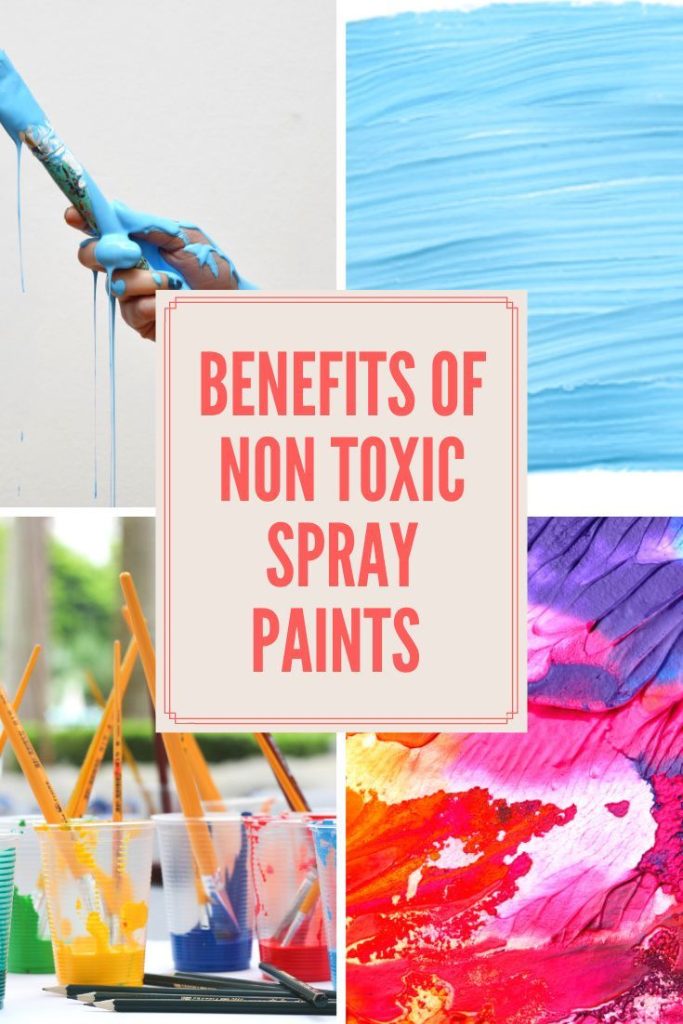
Choosing non-toxic paints is a crucial decision for creating a healthy home environment. Are you concerned about the potential health hazards lurking in your walls? Many conventional paints contain volatile organic compounds (VOCs), chemicals that can release harmful fumes into your air. These fumes can lead to respiratory problems, headaches, and even more serious health issues, especially for children and those with sensitivities. This thorough guide will explore the numerous benefits of switching to non-toxic paints, empowering you to make an informed choice for a healthier and safer living space. We will delve into the health implications of traditional paints, discuss the benefits of non-toxic alternatives, and offer practical steps to transform your home into a haven of well-being. Let’s begin!
Health benefits of Non-Toxic Paints
Reducing VOC Exposure
Conventional paints often contain high levels of volatile organic compounds (VOCs), which are released into the air as the paint dries. Prolonged exposure to VOCs has been linked to various health problems, including respiratory irritation, headaches, dizziness, and eye irritation. Studies by the Environmental Protection Agency (EPA) show the negative impact VOCs have on indoor air quality. By choosing non-toxic paints with low or zero VOCs, you drastically reduce your family’s exposure to these harmful chemicals, creating a cleaner and healthier breathing environment. This is particularly crucial for children, whose respiratory systems are still developing and are more vulnerable to the effects of VOCs.
Minimizing Allergy and Asthma Triggers
Many conventional paints contain additives and preservatives that can act as allergens or asthma triggers. Individuals with sensitivities may experience allergic reactions, such as skin rashes, respiratory issues, and exacerbations of asthma symptoms. Non-toxic paints, however, are formulated without these harmful additives, creating a less irritating environment for those with allergies or asthma. This makes them an excellent choice for homes with children, pets, or individuals with respiratory conditions. Switching to low-VOC paints can significantly improve air quality and contribute to a healthier home for everyone.
Promoting Better Sleep
The quality of indoor air directly affects sleep. VOCs from conventional paints can disrupt sleep patterns, leading to restlessness and poor-quality sleep. Non-toxic paints, on the other hand, help create a cleaner and healthier sleeping environment. A healthier sleep environment can contribute to improved mood, energy levels, and overall health. Considering the importance of sleep for cognitive function and overall well-being, choosing non-toxic paints can lead to significant long-term benefits for your health.
Environmental benefits of Choosing Non-Toxic Paints
Reducing Your Carbon Footprint
The production and disposal of conventional paints often contribute to environmental pollution. Non-toxic paints, frequently made from sustainable and renewable resources, reduce your environmental impact. Look for paints certified by organizations such as Green Seal or the EPA to help minimize your carbon footprint and support environmentally responsible practices.
Supporting Sustainable Manufacturing
Many manufacturers of non-toxic paints prioritize sustainable manufacturing processes, reducing their overall environmental impact. They source raw materials responsibly and reduce waste by improving production efficiency. By choosing these paints, you support businesses committed to minimizing their environmental footprint and promoting sustainability in the paint industry.
Promoting a Healthier Planet
Ultimately, reducing the use of harmful chemicals in your home contributes to a larger movement toward a healthier planet. The reduction of VOCs released into the atmosphere helps to mitigate climate change and protect our shared environment. Each choice you make in support of eco-friendly products makes a difference!
Practical Considerations When Choosing Non-Toxic Paints
Understanding Paint Labels
Carefully examine paint labels to understand their VOC text. Look for paints labeled as “low-VOC,” “zero-VOC,” or “VOC-complimentary.” However, it’s crucial to note that ‘VOC-complimentary’ usually means less than 5 grams of VOCs per liter. Be aware that some paints may use the term ‘low-VOC’ loosely. Always check the actual VOC text as well as certifications.
Choosing the Right Paint Type
varied types of non-toxic paints are suitable for various surfaces. Consider the specific needs of the room you are painting, whether it is a high-traffic area, a bathroom, or a child’s bedroom. Consult with paint professionals or review reviews online to understand each paint type’s benefits and limitations before you start your painting project.
Proper Ventilation During and After Painting
Even with low-VOC paints, proper ventilation is essential during and after painting. Open windows and doors to allow fresh air circulation, helping to reduce any remaining VOCs and prevent buildup. This is particularly crucial in smaller rooms where air circulation might be limited.
Long-Term Cost Savings with Non-Toxic Paints
Healthier Home = Reduced Healthcare Costs
By reducing your exposure to harmful chemicals and mitigating the risk of health issues, you can potentially save money on healthcare costs in the long run. This is a particularly crucial consideration for families with young children or individuals with pre-existing health conditions. A healthier home environment translates into fewer doctor visits, medications, and other healthcare-related expenses.
Enhanced Home Value
Homes with a commitment to health and environmental sustainability are increasingly attractive to buyers. Investing in non-toxic paints can potentially boost the value of your home over time as more and more people are seeking eco-friendly living spaces. This long-term investment can bring significant financial benefits when you eventually decide to sell your home.
boostd Durability and Longevity
Many non-toxic paints are formulated for enhanced durability and longevity, reducing the need for frequent repainting. This translates into long-term cost savings by reducing the time and materials needed for touch-ups or complete repainting projects.
Where to Find Non-Toxic Paints
Local Paint Stores
Many local paint stores now offer a scope of non-toxic or low-VOC paints. Take the time to ask querys and inquire about their environmentally friendly options. Local businesses are often knowledgeable and can offer valuable guidance on choosing the right paint for your needs.
Online Retailers
Online retailers offer a wide selection of non-toxic paints from various brands. Read customer reviews and compare prices before making a purchase. The convenience of online shopping allows you to explore a broader scope of products and find the optimal deals.
Specialized Paint Companies
Numerous paint companies specialize in producing eco-friendly paints. study companies known for their commitment to sustainable practices and environmentally responsible production. These businesses often offer detailed information about the composition and benefits of their products.
In conclusion, choosing non-toxic paints for your home offers significant benefits for your health and the environment. From reducing VOC exposure and minimizing allergy risks to promoting sustainable living, the benefits are undeniable. Don’t compromise on your family’s well-being; opt for non-toxic paints and create a healthier, happier home. Start your search for eco-friendly paints today and breathe easy knowing you’ve made a conscious choice for a healthier environment.
